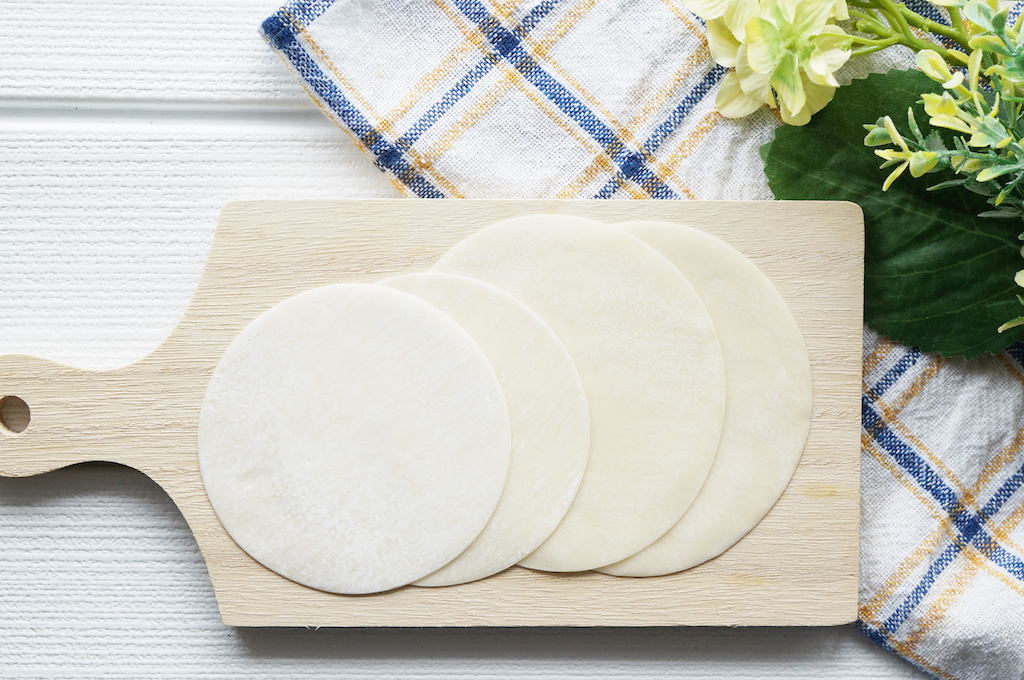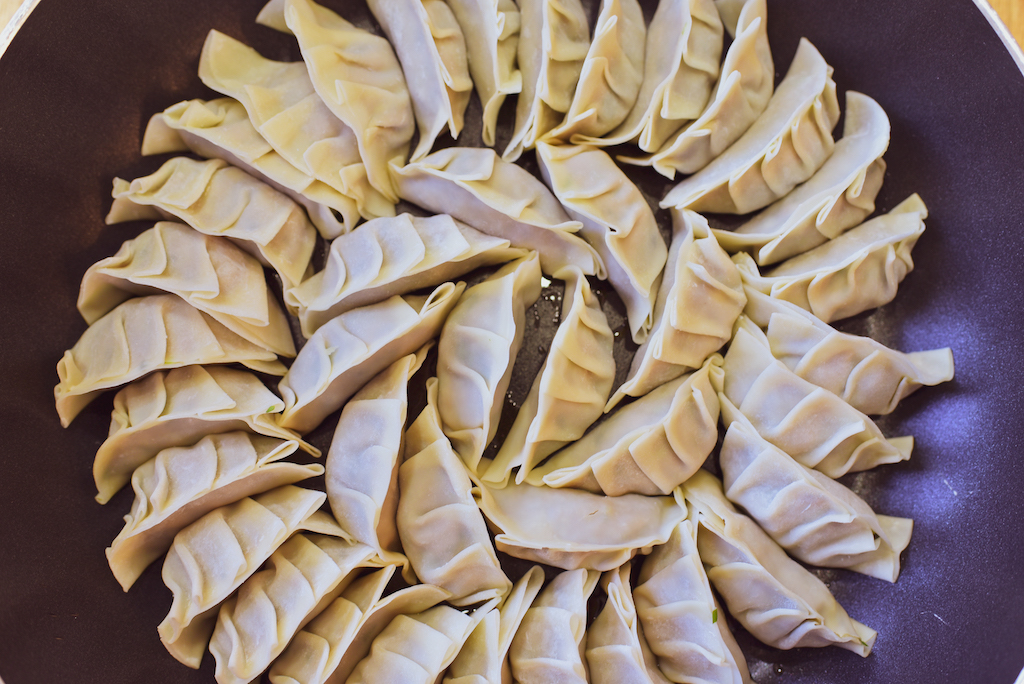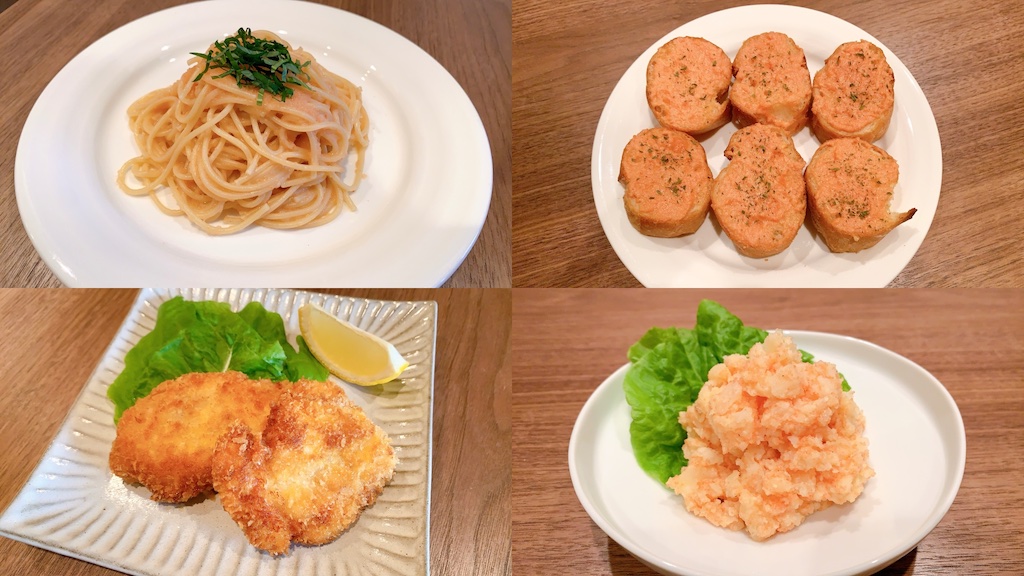There are so many kinds of potstickers and dumplings in Asian countries. That means there are various wrappers for each.
Here, I am introducing 5 different types of Asian wrappers focusing on what is used in Japan.
The concept of each may be a little different in countries other than Japan, but please use these information as a reference.
1. Gyoza Wrappers

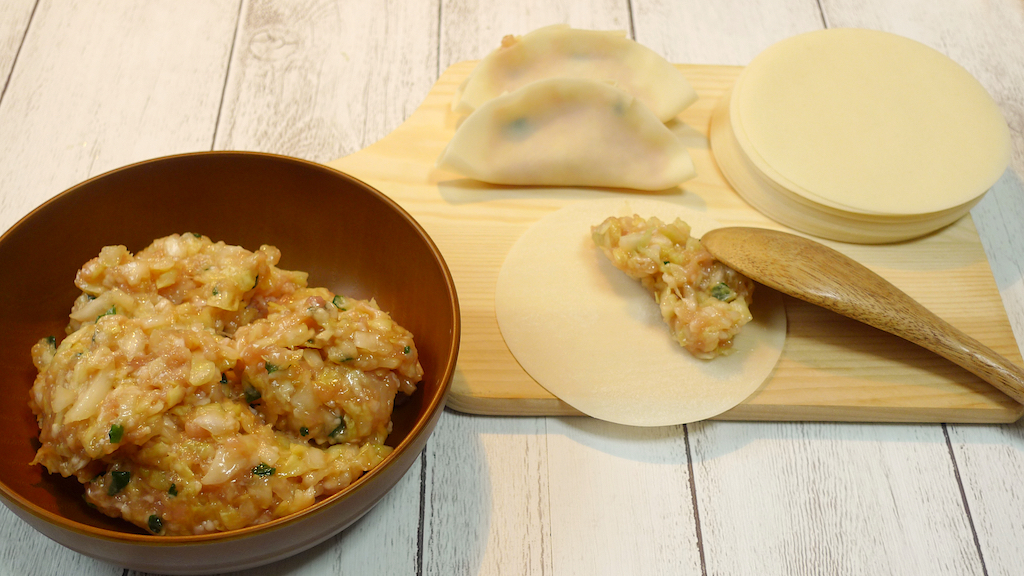
Shape:
Round shape with a diameter of about 7 cm (There are normal size and large size.)
Thickness:
0.8mm-1.5mm (It is a little thick so that it will not tear even if it’s boiled.)
Raw materials:
Cake flour, bread flour, salt, and water (Boiled dumplings are sometimes made only from bread flour to give a feeling of chewy.)
How to make:
Mix two types of flour. Add lukewarm water with salt, and mix until the powder becomes crumble. Then knead by hand. When it is smooth, wrap it in plastic wrap and let it sit for 15 to 30 minutes. Finally, dust the table, spread the dough to the desired thickness, and cut into the round shape.
Contents of gyoza:
Ground pork, Chinese cabbage or cabbage, Chinese chive, and condiments including grated ginger and garlic. The gyoza filling is usually seasoned with soy sauce, sugar, sesame oil, etc before being wrapped in skin.
The ingredients could differ depending on the restaurants and home, for instance, some people add minced shiso leaves or cheese, others add extra grated garlic.
Cooking methods:
There are various cooking methods, such as boiled gyoza, baked gyoza, and deep-fried gyoza. The most popular dish in Japan is baked gyoza.
2. Wonton Wrappers
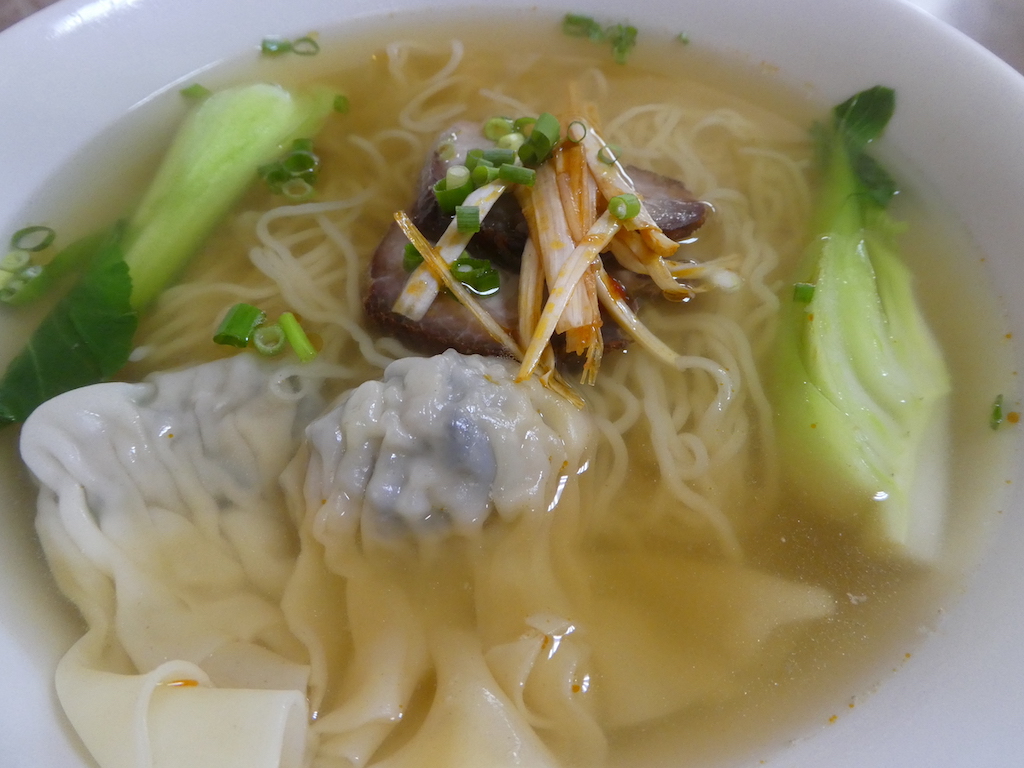
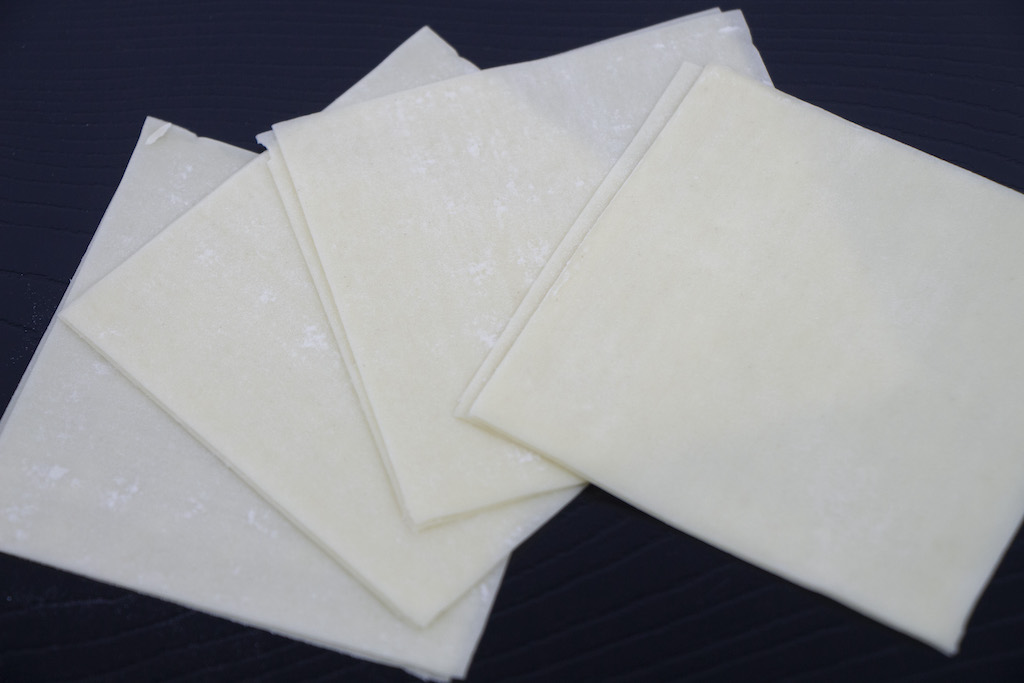
Shape:
Square with 8cm or 9.5cm on a side
Thickness:
About 0.6mm
Raw materials:
All purpose flour, kansui* (Alkaline preparations), salt, and water
*Kansui is made from sodium carbonate, potassium carbonate, and disodium phosphate. And it’s Alkaline substance recognized in Japan as safe food additives. This Alkaline preparations act on the protein (gluten) in flour, and it makes wrappers elastic despite being thin and soft.
How to make:
Mix all purpose flour and kansui or corn starch, add boiling water little by little, and mix until the powder becomes crumble. When the heat cools, knead the dough until it is as hard as an earlobe. Wrap it in plastic wrap and let it sit for 15 to 30 minutes. Finally, dust the table, spread the dough to the desired thickness, and cut into the square shape.
Contents of wonton:
Ground pork, minced green onions, and ginger. In many cases, seafood such as shrimp are used instead of meat. The filling is usually seasoned with soy sauce, salt and pepper before being wrapped in skin.
In Japan, sometimes only wonton wrappers (without any filling) are used as ingredients in a soup.
Cooking methods:
The most popular way is eating wonton with the soup or ramen noodles. Generally, wonton is cooked in boiling water, then put it in a soup or used as a ramen topping.
Furthermore, deep-fried wonton is also highly recommended. The wrappers will be extremely crispy and amazingly delicious.
3. Shumai Wrappers
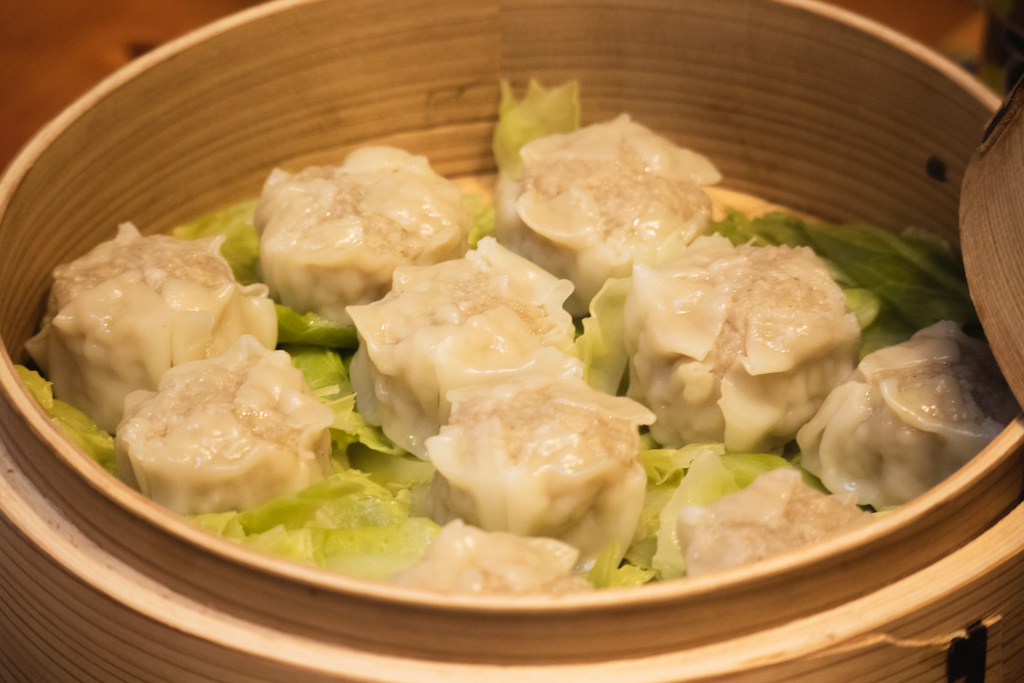
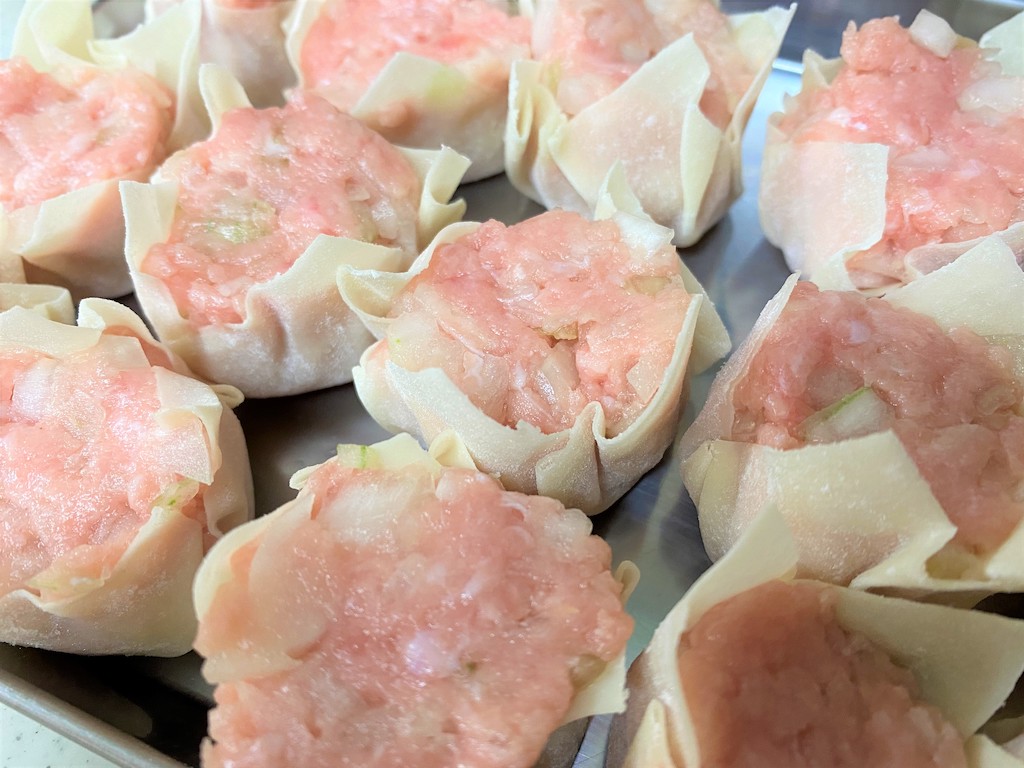
Shape:
Square with 8cm or 9.5cm on a side (Same as wonton wrappers)
Thickness:
About 0.5mm (Just a little thinner than wonton wrappers so that it can be steamed softly without superior to the taste of the ingredients.)
Raw materials:
Cake flour, bread flour, salt, and water (Same as gyoza wrappers)
How to make:
Basically the same as how to make gyoza wrappers
Contents of shumai:
Ground pork, minced onion, and ginger. You can change the seasonings to your liking, but basically they are similar to gyoza such as soy sauce and sesame oil.
Cooking methods:
The basic way to cook shumai is steaming. But, you can just bake the shumai in a pan or deep-fry them too.
4. Spring Roll Wrappers
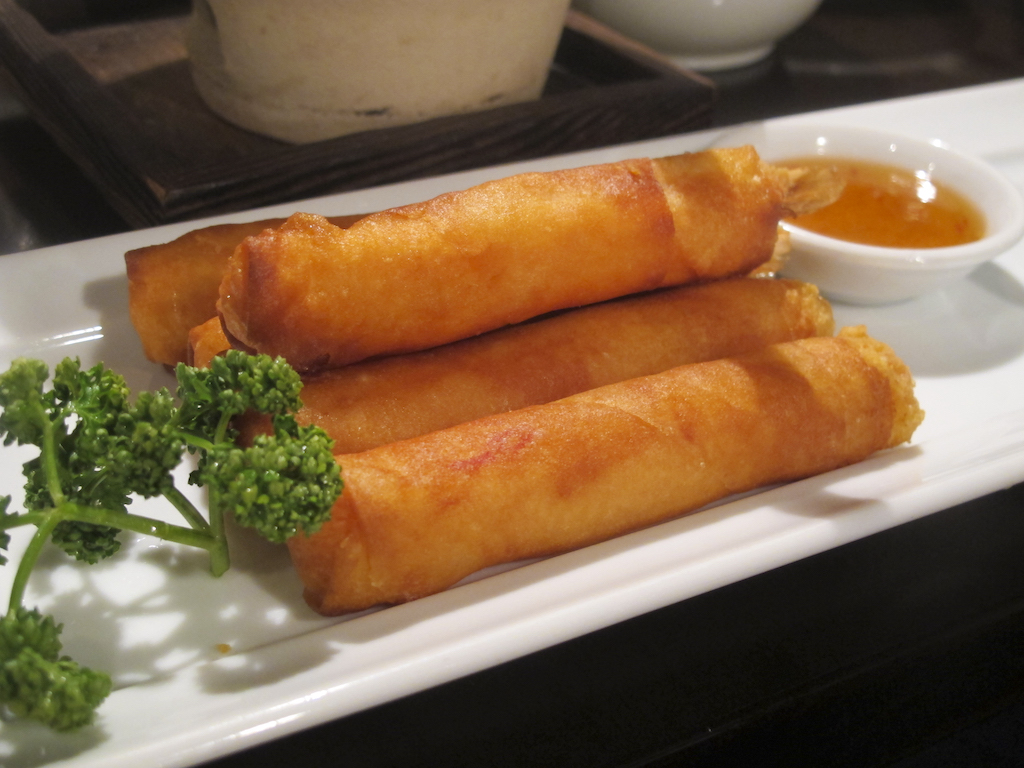
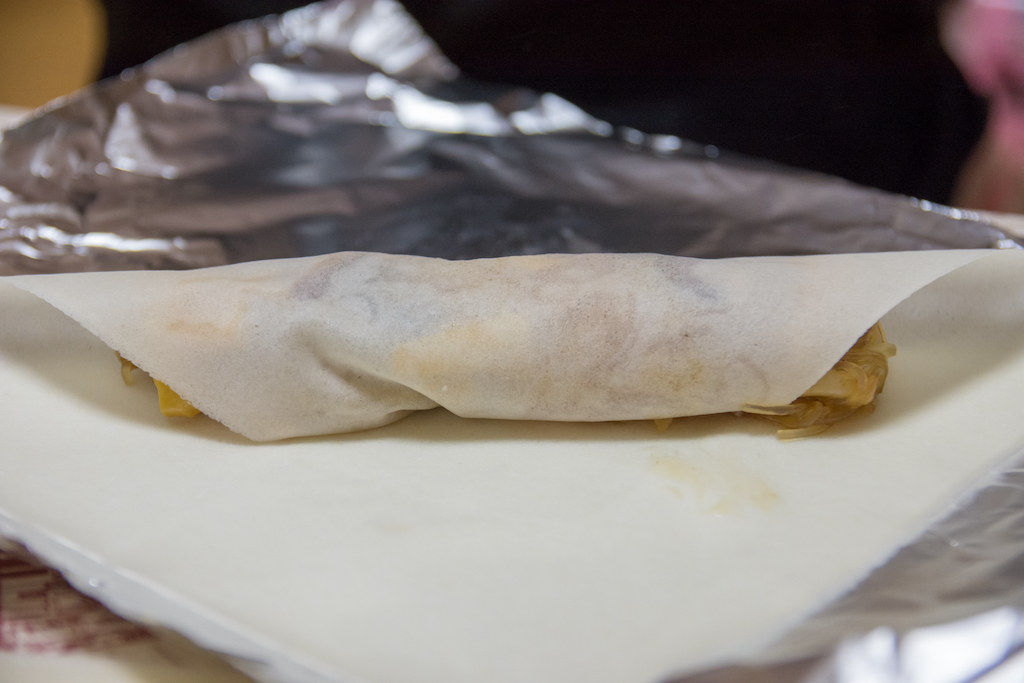
Shape:
Square with 19cm on a side (the small version is 15cm)
Thickness:
About 0.5mm
Raw materials:
Bread flour, salt, water, fat, and oil (It often contains sugars so that it can be fried in good color.)
How to make:
Mix bread flour with water, salt, and fat. Let it sit for a few hours. Then, bake like a crepe.
Contents of spring rolls:
Stir-fried meat and vegetables. Japanese spring rolls are usually made from pork, bamboo shoot, shiitake mushrooms, and gelatin noodles. They are seasoned with oyster sauce, sugar, soy sauce, and so on.
You can use various alternatives for the spring roll filling too. For example, the combination of chicken fillet, cheese, and shiso is very popular material for it.
Cooking methods:
Generally, you need to deep-fry the spring roll. The skin will be nice and crispy. If you don’t want to use a lot of oil in cooking, you can just pour a little oil in a pan. Or you can even use oven (toaster) to cook after oiling the wrappers.
5. Rice Paper Wrappers
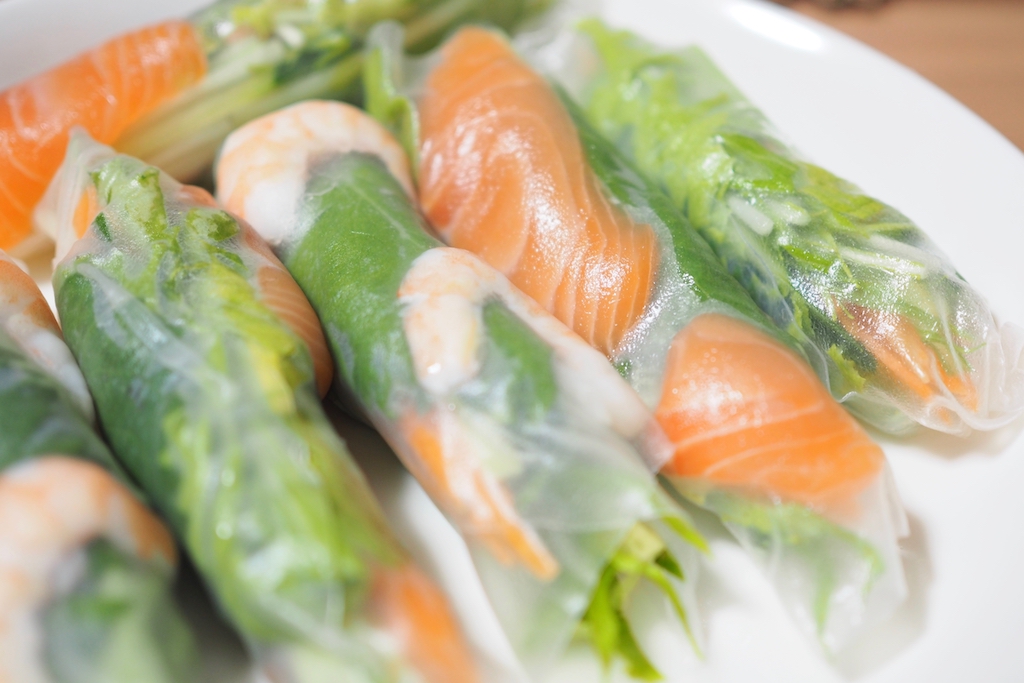
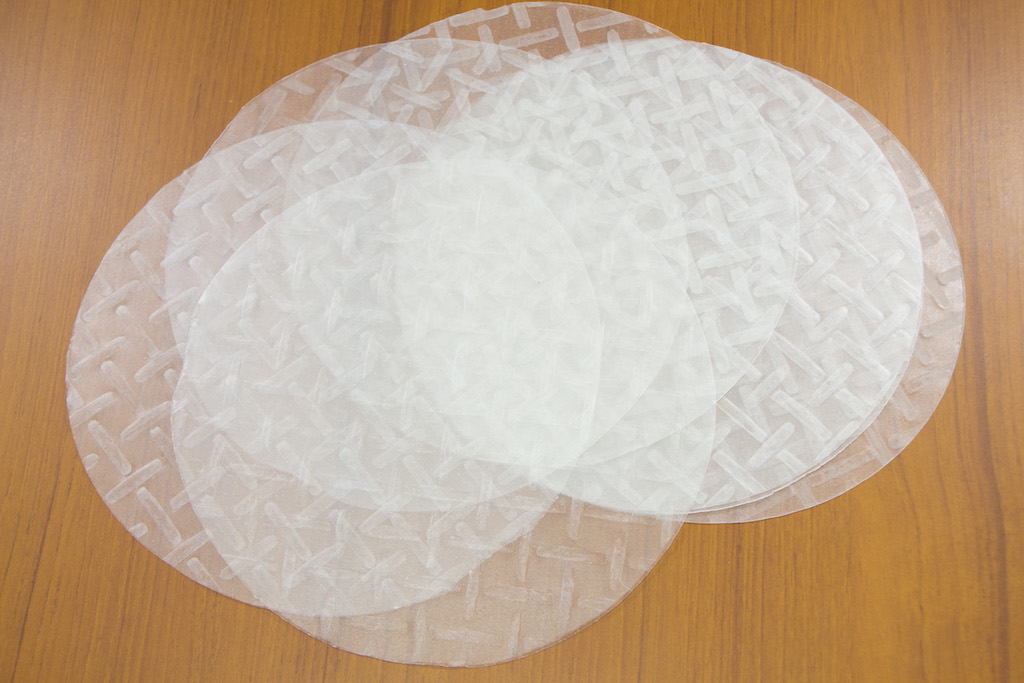
Shape:
Round shape with a diameter of 15-23cm
Thickness:
0.26mm
Raw materials:
Rice flour, tapioca starch, and salt
How to make:
Make a thick liquid using rice flour, tapioca starch, and salt. Spread it flat, cook it with steam, and dry it one by one. Because the finished product is dry and crispy, wet it in water once to soften it before cooking.
Contents of fresh spring rolls (summer rolls):
Shrimp and various vegetables such as carrot, cucumber, lettuce, etc. Avocado, salmon, and coriander are also popular toppings.
Cooking methods:
All you need to do is soaking the rice paper in water before wrapping. There is no need to use fire to make fresh spring rolls.
Besides that, you can also make deep-fried spring rolls using a rice paper.
Conclusion
Gyoza Wrappers and Shumai Wrappers are very alike, so they can be great alternatives to each other.
Because the raw material of Wonton Wrappers is a little different from these two, it can keep the chewy texture even if it’s in the soup.
The feature of Spring Roll Wrappers is that it is cooked once, and it will be nice and crispy by deep-frying.
Rice Paper Wrappers can be used only by soaking in water, and you can make so delicious summer rolls without heating.

